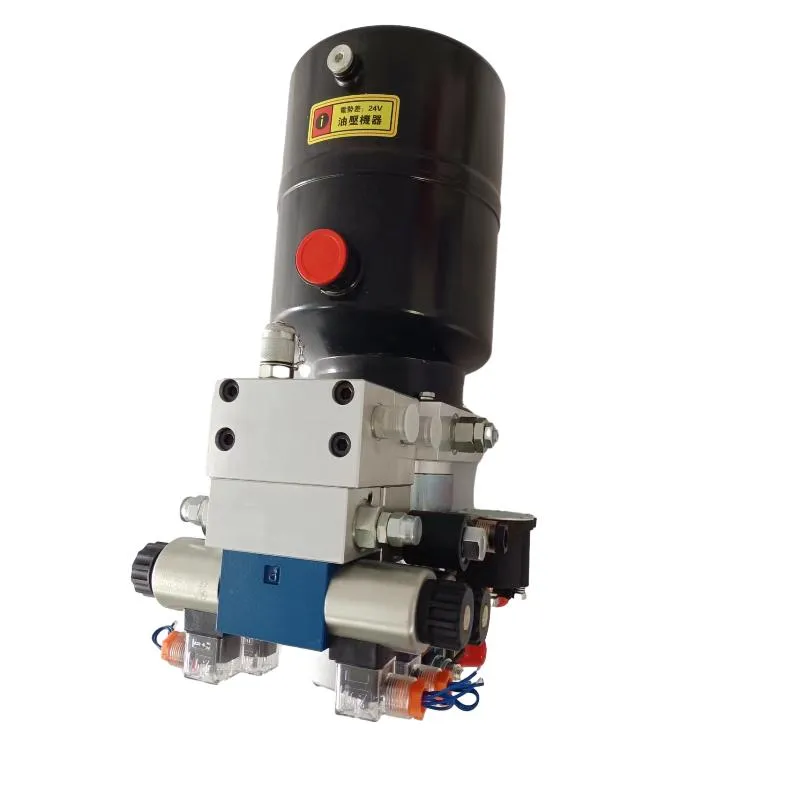Desemba . 20, 2024 12:51 Back to list
DIY Hydraulic Cylinder Creation Guide for Homemade Projects and Applications
Homemade Hydraulic Cylinder A Guide to Creation and Benefits
In the realm of DIY projects and engineering, the homemade hydraulic cylinder stands out as a remarkable achievement. This device not only demonstrates the principles of hydraulics but also offers practical applications for various tasks, from lifting heavy objects to constructing your very own machinery. In this article, we'll explore the components required, the construction process, and the benefits of having a homemade hydraulic cylinder.
Understanding Hydraulic Cylinders
Hydraulic cylinders are crucial components in many industrial applications. They function based on Pascal's Principle, which states that when pressure is applied to a confined fluid, the pressure change occurs throughout the fluid without loss. Consequently, hydraulic cylinders are utilized to convert fluid power into linear force, enabling the movement of heavy loads with relative ease.
Components of a Homemade Hydraulic Cylinder
Before diving into the construction process, it's essential to understand the components you'll need
1. Cylinder Barrel This is the main body of the hydraulic cylinder, where the hydraulic fluid is contained. 2. Piston The piston fits snugly within the cylinder and is pushed by the hydraulic fluid, creating motion. 3. Piston Rod This connects the piston to the object being moved or lifted. 4. End Caps These seal the ends of the cylinder, maintaining pressure and containing the hydraulic fluid. 5. Hydraulic Fluid A suitable fluid, such as hydraulic oil or water, which facilitates the movement of the piston. 6. Seals and Gaskets To prevent leaks and maintain pressure within the cylinder. 7. Pump A manual or electric hydraulic pump is necessary to supply fluid pressure.
Steps to Build a Homemade Hydraulic Cylinder
1. Design Your Cylinder Determine the size and specifications based on your requirements. Consider factors like the desired lifting capacity and stroke length. 2. Gather Materials Obtain the necessary materials and tools, including metal tubing for the cylinder barrel, a piston made from durable materials, seals, and an appropriate pump.
3. Construct the Cylinder Barrel Cut the metal tubing to the desired length. Ensure the edges are smooth to avoid any sharp edges that might cause damage.
4. Create the Piston The piston can be made from materials such as aluminum or steel. Ensure it fits snugly inside the barrel, allowing minimal fluid escape around the edges.
5. Install Seals Place seals or gaskets at both ends of the cylinder. These are crucial to prevent hydraulic fluid from leaking.
6. Attach End Caps Secure the end caps to both ends of the cylinder. This will contain the hydraulic fluid and allow for pressure to build up effectively.
homemade hydraulic cylinder product

8. Set Up the Hydraulic Pump Connect the hydraulic pump to one end of the cylinder. Make sure it is functioning correctly to supply the necessary fluid pressure.
9. Fill with Hydraulic Fluid Fill the cylinder with your chosen hydraulic fluid, ensuring no air bubbles are present, as they can affect performance.
10. Test the Cylinder Before using your homemade hydraulic cylinder for larger tasks, conduct tests with lighter loads to ensure everything is functioning properly.
Advantages of a Homemade Hydraulic Cylinder
1. Cost-Effective Constructing your hydraulic cylinder can save significant amounts of money compared to purchasing commercial units.
2. Customization You can create a hydraulic cylinder tailored to your specific needs, allowing for modifications in size, power, and function.
3. Educational Experience Building your device is an excellent opportunity to learn about hydraulics, engineering principles, and mechanics.
4. Versatility Homemade hydraulic cylinders can be used for various applications, including automotive repairs, lifting equipment, and even in construction projects.
5. Satisfaction Completing a DIY project such as this provides a sense of accomplishment and can inspire further engineering projects.
Conclusion
A homemade hydraulic cylinder is not just a fascinating project but also a functional tool that can enhance your DIY endeavors. With a bit of patience and understanding of hydraulic systems, you can create a device that serves multiple purposes in your workshop or home. Whether lifting heavy objects or experimenting with fluid mechanics, this project is sure to engage anyone interested in engineering and craftsmanship.
-
High-Performance Set of 50/60-45-290 471 | Durable & Reliable Components
NewsAug.26,2025
-
Efficient Pallet Truck Power Units - Reliable Hydraulic Systems
NewsAug.25,2025
-
Premium Set of 50/60-45-290 471 Parts | High Performance
NewsAug.24,2025
-
Efficient & Reliable Double Acting Power Unit | Hydraulic Solutions
NewsAug.23,2025
-
1.5 Ton Turbocharged Cylinder 80/95-40/60-35-124 | High Performance
NewsAug.22,2025
-
High-Performance Fork Lift Hydraulic Power Units
NewsAug.21,2025
